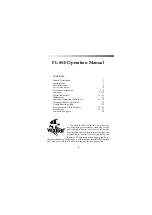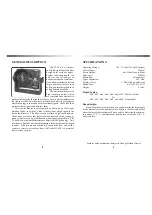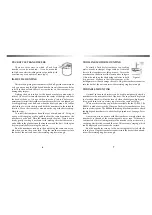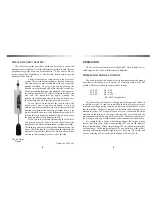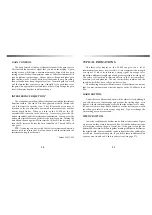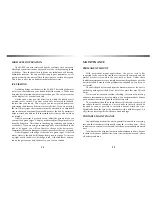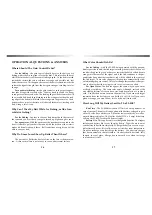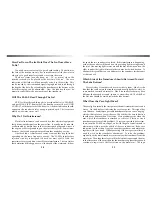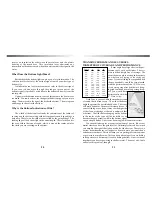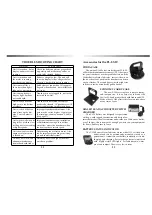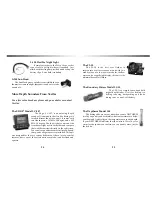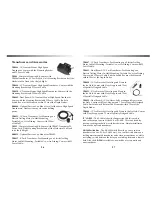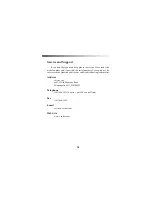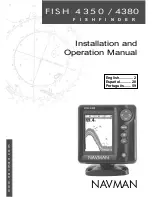
20
21
Beam angle has a large effect on the per-
formance of your depth finder. There is
more to it than simply area of coverage. The
correct beam angle to use depends entirely
on what you are trying to do with your
sonar. If you are fishing for suspended fish
then you probably would be very pleased
with the performance of the 19º. However,
if you were going after fish that are hang-
ing right on the bottom, along a steep drop-
off, you would have
better results with the
9º. Here's why;
Dead Zone is an area within the transducers cone
of sound that is blind to you. The wider the beam
angle the greater the possible dead zone. The sonar
will mark bottom as the nearest distance it sees. If
you are fishing over a slope, it may see the high side
of the slope, at the edge of the cone, and mark that
as bottom. The fish that are hanging on the bottom
in the center of the cone will be invisible to you
because they are actually within the bottom signal
on your depth finder. A narrower beam angle will reduce this effect.
Your depth finder puts out a constant amount of power. It does not
matter where you have the gain level set. Gain simply controls how much
you amplify the signal that is bounced off of the bottom. Therefore, a
narrow beam transducer will appear to be much more powerful than a
wide beam transducer. This is because you are putting that same amount
of power into a smaller area. This can be an advantage if you are fishing
in deep water or a detriment if you are fishing shallow. A narrow beam
transducer can be overpowering in shallow water. The use of an S-Cable
will solve this problem, though.
TRANSDUCER BEAM ANGLES VERSES
DIAMETER OF COVERAGE AND PERFORMANCE
creates an insulation layer between the metal arm and the plastic
housing of the transducer. This insulation layer eliminates any
transmission vibrations caused when the unit transmits the signal to the
water.
What Does the Bottom Light Mean?
Besides depth the bottom light can give you a lot of information. The
width and color content of the bottom signal can tell you what type of
bottom it is.
Ice fisherman can look for movement of color in the bottom signal.
If you see a red line move through the orange or green part of the
bottom signal, it's probably a fish close to the bottom and away from the
center point.
Open water fisherman usually can't see this because the boat moves
too much. You can, however, see changes in the bottom type as you move
along. The more red in the signal, the harder the bottom. The more green
and orange in the softer the bottom
Why is the Bottom Indication so Wide?
The width of the bottom is actually the summation of the radius of
coverage on the bottom along with bottom penetration, depending on
hardness. The color and width are controlled by the gain settingl. The
leading edge of the bottom light is the actual depth. The color beyond is
the area, within the cone of sound, which is around the center point of
the circle you are covering on the bottom.
Depth
9º
12º
19º
10’
1.6’
2.2’
3.4’
20’
3.2’
4.3’
6.7’
30’
4.7’
6.3’
10.0’
40’
6.3’
8.4’
13.4’
50’
7.9’
10.6’
16.7’
60’
9.4’
12.6’
20.8’
70’
11.0’
14.7’
23.4’
80’
12.6’
16.8’
26.8’
90’
14.2’
20.0’
30.1’
100’
15.7’
21.0’
33.5’
120’
18.9’
25.2’
40.2’
150’
23.6’
31.5
50.2’
300’
47.2’
63.0’
100.4’

